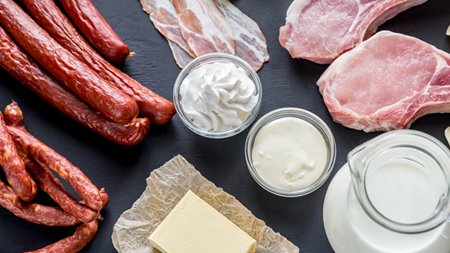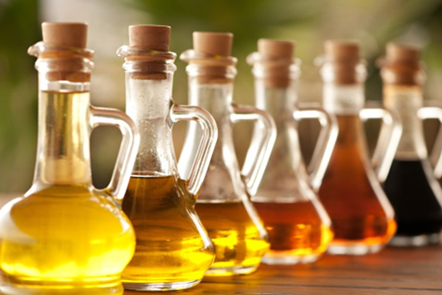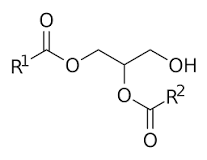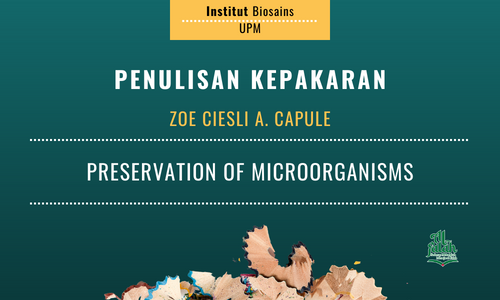MALAYSIA IS THE FATTEST NATION IN SOUTH EAST ASIA. A survey to screen employees for non-communicable diseases (NCD) conducted by Social Security Organization (SOCSO) Malaysia on 308,039 Malaysian employees in 2013 showed that 36.94% were overweight, 17.63% were obese, 13.14% had hypertension, 61.67% had hypercholesterolemia (presence of an abnormally large amount of cholesterol in blood) and 8.45% had diabetes (The Star, 27 February 2015).

Malaysians’ present lifestyle and culture were among the reasons cited for the rise in these figures. Excessive intake of fat in diet has been linked to diseases such as heart disease, cancer, obesity and possibly, gallbladder disease. Increased saturated fat intake is associated with high blood cholesterol and increased risk of coronary heart disease. It is difficult for individuals to change their dietary habits to reduce or minimize fat intake, while enjoying their favourite foods. This problem and the interest shown by consumers in structured lipds led to the search by the food industry and scientific community, for “Healthy Fats of the Future”.

Animal-based sources of saturated fat

Some plant-based oil contain primarily saturated fats, but do not contain cholesterol. Others may contain mono and polyunsaturated fats and omega-3 fatty acids.
Generally, dietary fats and oils are classified as essential macronutrients which are prerequisites to maintaining the physiological functions of a human body. Being the most energy sufficient source of food, supplying as much as 9 calories energy, it provides us with the basic energy for daily activities. It also serves as the building blocks of healthy cells, carriers for fat-soluble vitamins, organ protector and body insulator. Dietary fats and oils also play an important role in enhancing the sensory and textural properties of food products. The presence of dietary fats and oils indirectly improve the palatability, mouthfeel, aroma, flavour and glossiness of food. Often, fat-dense foods, such as deep fried and bakery products,are the ones perceived to be more tasty to the consumers.
Functional oil or structured lipid refers to dietary fats and oils that have the potential to promote health and reduce the risk of disease. The concept was first introduced by Babayan (1987), for nutritional and medical purposes. Babayan came out with a structured lipid called medium chain triglyceride (MCT) that possessed the ability to be metabolised rapidly compared to the conventional fats and oils. Sometimes, structured lipid can also be referred to “nutraceuticals” or “pharmafoods”. Various types of structured lipids which serve different purposes have been produced commercially.
|
Structured lipid
|
Application
|
|
Betapol
|
Human milk fat substitute
|
|
Caprenin
|
Low calories synthetic fat
|
|
Behenim
|
Anti-bloom in chocolate
|
|
Captex (medium chain triglycerides)
|
Low calories synthetic fat
|
|
Diacylglycerols
|
Low calories synthetic fat
|
|
Medium and long-chain triacylglycerols
|
Low calories synthetic fat
|
|
SALATRIM
|
Low calories synthetic fat
|
|
Structolipid
|
Total parental nutrition
|
List of various commercially available structured lipids and their application
Just as micronutrients have been lauded to prevent disease, so too has the effect of structured lipids like diacylglycerols (DAG) on obesity and weight-related disorders. The physiological effect of DAG is believed to be attributable to its metabolic pathway, which is different from the normal triacylglycerol (TAG) metabolism. With structured lipids, we can combine the different positive and nutritionally valuable fatty acids in palm oil to produce a potent structured lipid with maximum benefits and minimum adverse effects.
Diacylglycerols – Structure And Properties
Diacylglycerol (DAG) is a glyceride consisting of two fatty acid chains covalently bonded to a glycerol molecule through ester linkages.

DAG is present in plant oils such as soybean (1%), cotton seed (9.5%), palm (5.8%), corn (2.8%), sunflower (2.1%), olive (5.5%) and rapeseed (0.8%). DAG oil has several healthful benefits and is classified as a type of structure lipid. The main nutritional functions of DAG oil vs TAG oil are suppressive effects on postprandial serum triglyceride and body fat accumulation.
In general, DAG can be produced by esterification of fatty acids and glycerols, glycerolysis between TAG and glycerol, partial hydrolysis of TAG in presence of water and MAG or a combination of partial hydrolysis and esterification reactions.
Benefits and Application of DAG Oil
DAG is used to promote weight loss and to treat high levels of triglycerides (blood fats). When used in place of other fats, it might promote modest weight loss. DAG usually added to products such as muffins, crackers, soup, cookies and granola bars. In manufacturing, DAG is ised as stabilizer, thickener and texturizer.
Since the consumption of DAG oil offers positive effects for weight management, visceral fat, post prandial and fasting triglycerides, it has prompted great interest among food scientists to incorporate DAG oil into a variety of food products. In 2006, DAG was authorised as a novel food ingredient for use in cooking oil, fat spread, salad dressing, mayonnaise, drinks and bakery products. Potatoes, chicken and doughnuts fried in DAG oil resulted low water content, which prevented it from getting moist easily and reduced its crispiness over a prolonged period of time. Besides food applications, DAG also has potential as starting material for various organic products such as phospholipids, glycolipids, lipoprotein and pro-drugs for treatment of Parkinson’s disease.
Scientists have been playing around with the structure of fats and oils for many years. With increased understanding about the effects of certain fatty acids, their chain length, degree of unsaturation and positional distribution on the metabolism, scientists today are able to construct “healthy fats” which are tailor made to meet specific nutritional or health requirements. The modified or newly synthesized lipids may be the answer to solving the love/hate relationship consumers have towards traditional fats. Commercial Econa cooking oil issue has raised concern of possible exposure to glycidol fatty acid ester (GEs), a known animal carcinogen. This is a major challenge to lipid chemists in all fields; to understand the contributions of the underlying composition and structure of oils to the formation of glycidol ester, and to use that understanding to intelligently predict the most advantageous way to mitigate the situation. Until the underlying mechanisms and economical mitigation strategies for removal of glycidol ester in DAG oils is put in place, the potentiality of DAG oils as “Healthy Fats of the Future” remains uncertain.
Tarikh Input: 27/11/2018 | Kemaskini: 20/02/2019 | azah
PERKONGSIAN MEDIA
















.png)






